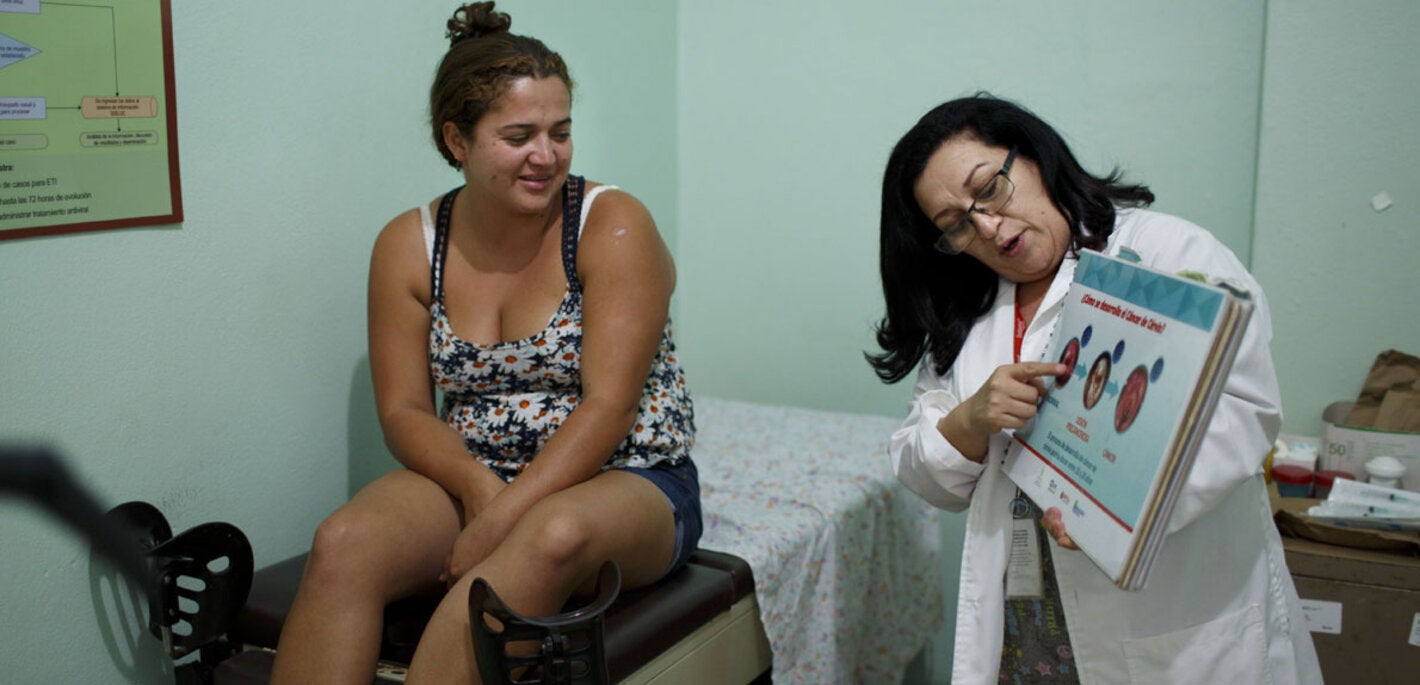
Representatives of different sectors will develop action plan to reduce cancers that affect some 400,000 women annually in the region
Washington, D.C., 4 February 2013 (PAHO/WHO) — With the goal of reducing deaths from breast and cervical cancer in the Americas, the Pan American Health Organization/World Health Organization (PAHO/WHO) this week is bringing together representatives of governments, international organizations, academic institutions, civil society, and the private sector to develop a plan of action for screening, early diagnosis, education and treatment for these cancers and for expanded vaccination against human papillomavirus (HPV).
Some 400,000 women are diagnosed with breast or cervical cancer each year in the Americas, and some 120,000 die from these diseases. Both types of cancer are preventable and treatable through screening, early diagnosis and proper treatment.
"For a public health problem of this magnitude, and given that we have the know-how and technology to save lives, we urgently need all sectors of society to work together to help ensure equitable access to cancer prevention, screening, diagnosis, treatment and palliative care," said PAHO Director Carissa F. Etienne. "That is why today, we are galvanizing the support of the international health community to jointly accelerate breast and cervical cancer prevention and control in the Americas."
"The timing for this endeavor, the Women's Cancer Initiative: a joint commitment to save lives, is right," said Dr. Etienne. "In addition to the Political Declaration of the U.N. High Level Meeting on NCDs in 2011, the recently adopted WHO Global Monitoring Framework for NCDs calls for a 25% reduction in premature mortality from NCDs by 2025. It has provided governments with tangible targets and indicators for cancer incidence, cervical cancer screening, and HPV vaccination. It is up to those of us gathered here today to guide efforts and investments to support governments to achieve these targets and indicators."
The multi-year plan of action that will result from this week's meeting will include advocacy and communications to mobilize women, communities and stakeholders; improvements in health service capacity for breast and cervical cancer screening, diagnosis, treatment, and palliative care; scaled up access to HPV vaccination; and expanded research.
Under the tagline "Cancer — Did You Know?" this year's World Cancer Day (Feb. 4) seeks to dispel common myths and misconceptions about cancer, for example, that it is a disease of rich countries but not poor ones or that "cancer is a death sentence." Participants in this week's meeting will discuss ways to counter these and other cancer myths.
WORLD CANCER DAY
Myths and truths about cancer
Myth 1: Cancer is just a health issue.
- Truth: Cancer has wide-reaching social, economic, development, and human rights implications.
- Cancer is both a cause and an outcome of poverty. The high cost of treatment adversely impacts families' ability to earn an income. Poverty and the lack of access to education and health care increase the risk of getting cancer.
Myth 2: Cancer is a disease of the wealthy, elderly, and developed countries.
- Truth: Cancer is a global epidemic affecting all ages and socioeconomic groups, with developing countries bearing a disproportionate burden.
- Cervical cancer is just one example of the disproportionate burden borne in the developing world. In fact, mortality from cervical cancer is almost seven times higher in Latin America and the Caribbean than in the United States and Canada.
Myth 3: Cancer is a death sentence.
- Truth: Many cancers that were once considered a death sentence can now be cured.
- With few exceptions, early-stage cancers are less lethal and more treatable than late-stage cancers, so cancer prevention and early diagnosis through improved screening programs and access to health systems are vitally important.
Myth 4: Cancer is my fate.
- Truth: Improving diet, increasing physical activity, and maintaining a healthy bodyweight could prevent about a third of the most common types of cancer.
- More than 250,000 people in the Americas die of tobacco-related cancers each year.
- Vaccinating adolescent girls against HPV would prevent some 70% of cervical cancer cases.



